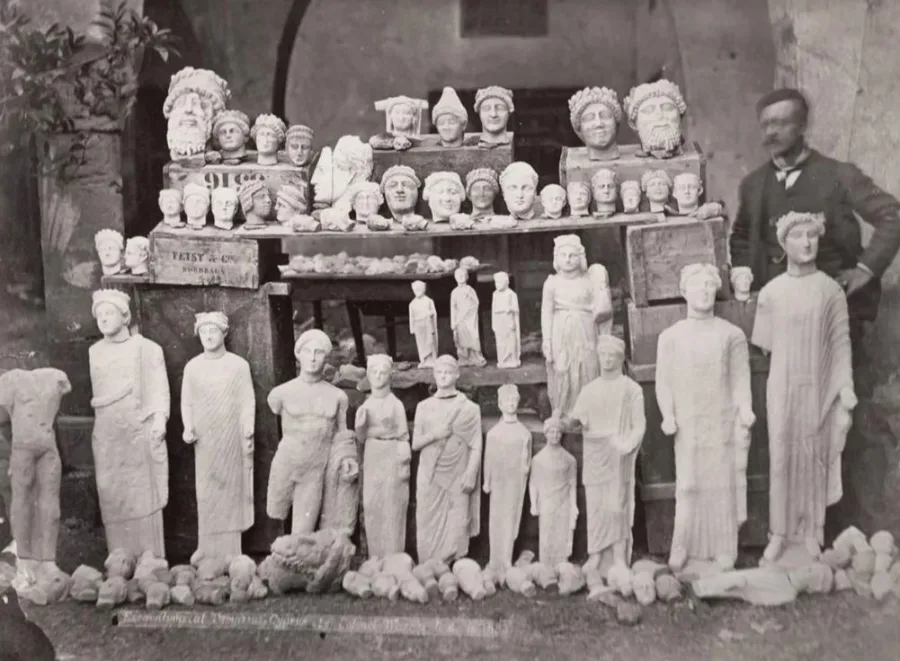The Sanctuary of Apollo at Frangkissa, the site of a recent and remarkable archaeological breakthrough, is offering new insights into the ancient history of Cyprus—thanks to ongoing excavations.
First recorded in 1885 by German explorer Max Ohnefalsch-Richter, the temple concealed archaeological treasures that remained overlooked for nearly 140 years, until a team of experts decided to revisit the site with fresh eyes and modern methods.
Nestled in a secluded valley near ancient Tamassos, a joint expedition by the universities of Frankfurt and Kiel/Würzburg uncovered invaluable fragments of statues during the 2024 excavation season—findings that are already transforming our understanding of Cypriot religious art.
Unearthing Forgotten Treasures
Under the leadership of Dr. Matthias Recke from the University of Frankfurt and Dr. Philipp Kobusch from the Archaeological Institute of Kiel University, the team conducted a meticulous re-examination of the sanctuary. Supported by the Cyprus Department of Antiquities and the AMRICHA Foundation in Leipzig, they carried out geophysical surveys that revealed previously unnoticed underground statues and architectural structures.
The initial discovery may have been made over a century ago, but it is only now that its full significance is coming to light.
During the recent excavations, archaeologists unearthed the remains of a votive courtyard and more than 100 statue bases—some of colossal proportions. In a surprising twist, numerous sculptural fragments were found in the very soil disturbed during the original 1885 dig, apparently overlooked during what was then a rushed excavation.
These newly recovered fragments are now aiding in the restoration and completion of statues exhibited in museums across the globe, including the Cyprus Museum in Nicosia and the Royal Ontario Museum in Toronto. The discovery of oversized feet, far beyond human scale, confirms the presence of monumental male figures sculpted from Archaic-period limestone.
Additional finds—such as marble and glass beads and Egyptian faience amulets—point to previously unknown votive offerings and suggest broader cultic practices, as well as potential international cultural links, now being reevaluated through the lens of modern archaeology.
A Temple Reveals Its Secrets
Among the most striking discoveries are two inscribed statue bases: one bearing Cypro-Syllabic script, and the other referencing the Ptolemaic dynasty. These inscriptions indicate that the sanctuary remained an important religious site well beyond the Archaic era, evolving through successive phases of Greek cultural influence.
Archaeologists are now reassessing the architectural layout of the sanctuary. Emerging evidence suggests significant expansions over time. Using advanced technologies, researchers identified a large peristyle courtyard—likely used for communal feasting—offering a window into the ritual practices of ancient worshippers.
Noteworthy finds include characteristic terracotta figurines—chariots, horsemen, and warriors—as well as large hollow statues, some life-sized. One recently unearthed shoe fragment bears striking stylistic similarities to life-sized sculptures uncovered during the original 1885 dig.
In another key development, archaeologists traced the 13-meter trench from the original excavation, shedding new light on early archaeological work at the site. This trench exposed remains of double-walled masonry, clearly part of the sanctuary’s original architectural framework—elements that went undocumented in the 19th century.











